I have looked through all the other 'what is this component' questions and have not found my component. I am looking for the component in the red box. It is from a rectifier circuit off a 1973 9.8 hp Mercury 110 Outboard. I ripped the silicon off the red plastic housing and this is what is underneath! I'm sure there is more than one person out there looking to source these parts.
Also I built the circuit in CircuitLab to see what it's like. The component in question is (F1).. you can see from the schematic it's a Bridge diode circuit. Right now the best guess on F1 is a fuse (I used to think it was a high wattage resistor - to drain transient current) If it's a Fuse, how is it being used successfully in this circuit? It doesn't seem to prevent any current from going to the output when blown.

simulate this circuit – Schematic created using CircuitLab
The circuit has two oscillating inputs like I believe the ignitor coils see when the EMF is passing through them. The switch to short them is while the coil is just left there - acting as a resistor of sorts. It is a magnento type ignition system where both the magnets and ignitor coils are positioned 180 degrees from each other, so that both magnets pass over the coils at the same time, creating a voltage in each coil to power the spark.
SW1 - is the high speed coil (~2K ohms)
SW2 - is the low speed coil (~4K ohms)
Can anybody tell me what the component in the red box is? It looks like straight carbon - like from a brushed motor but have not had any luck finding it through google or online part warehouses (digikey, mouser, etc..).
* I now believe this to be a Ceramic Cartridge fuse but need verification before assuming that is correct.
Thanks in advance!
